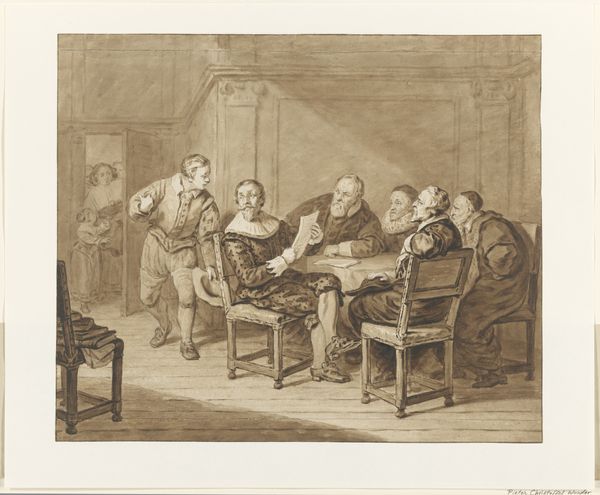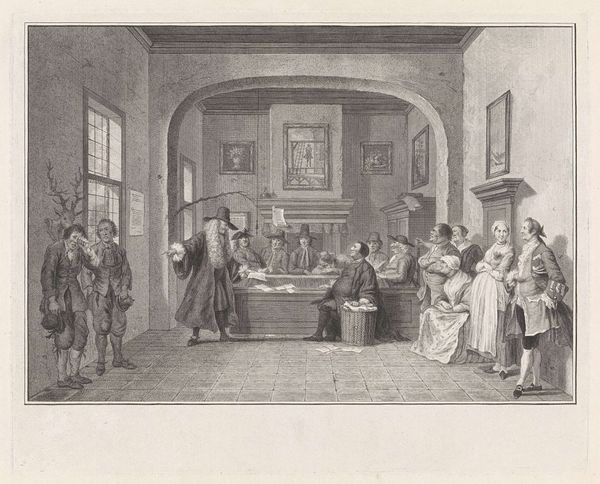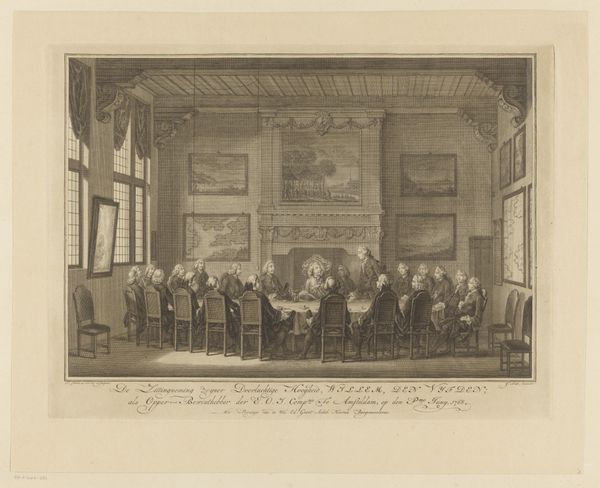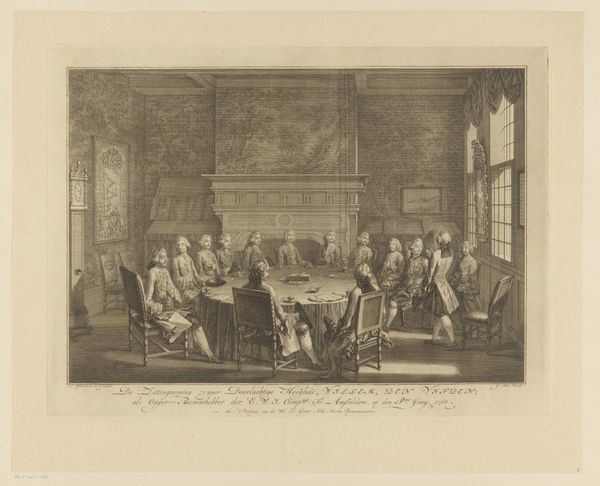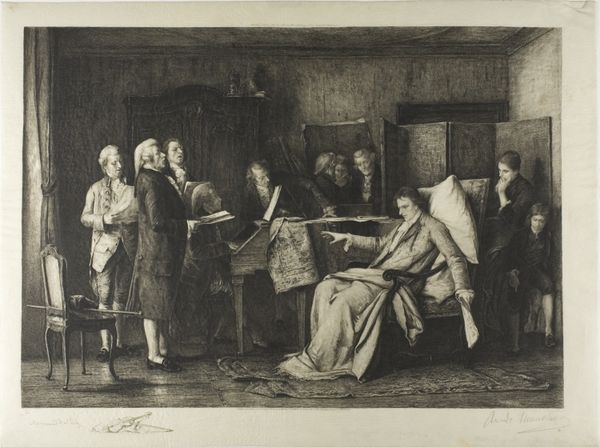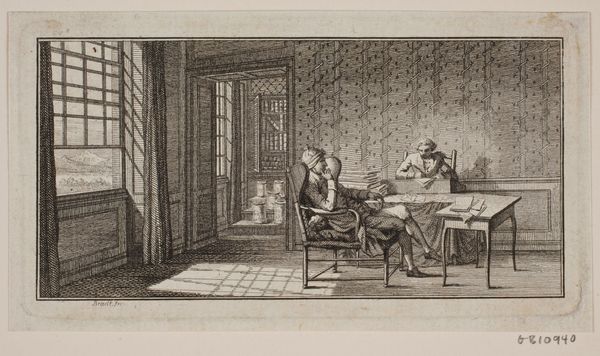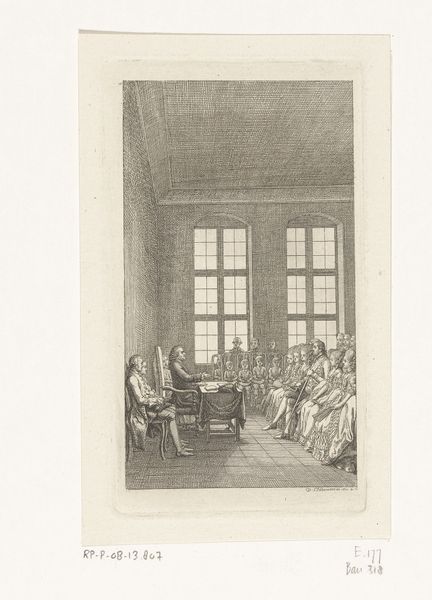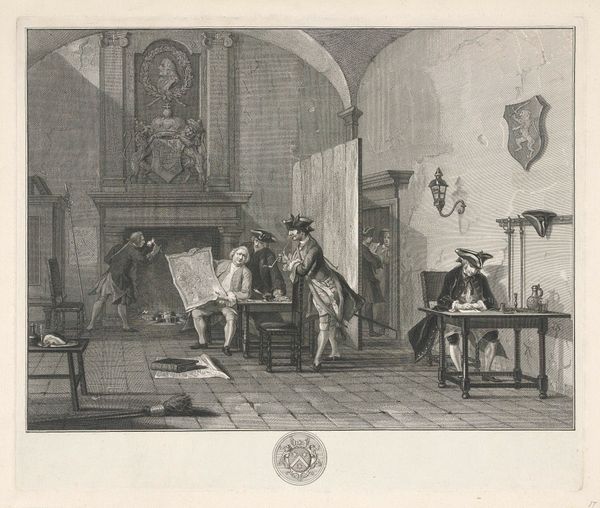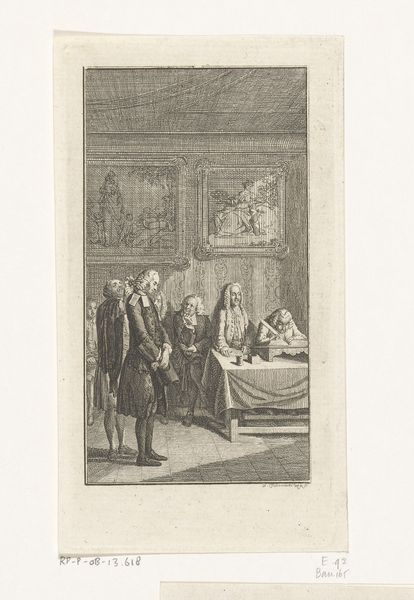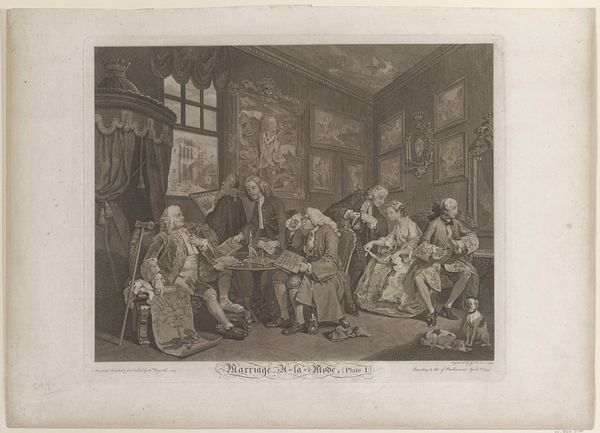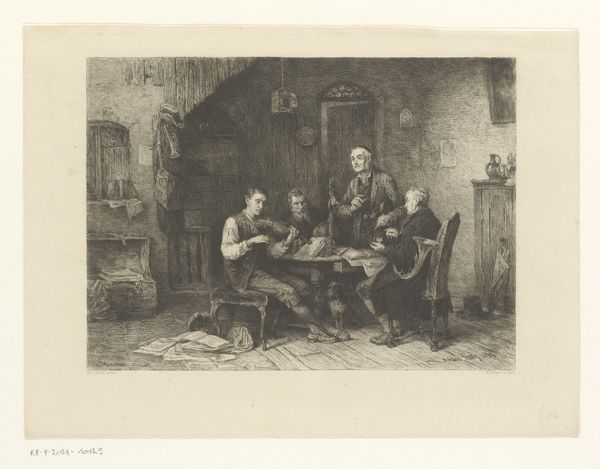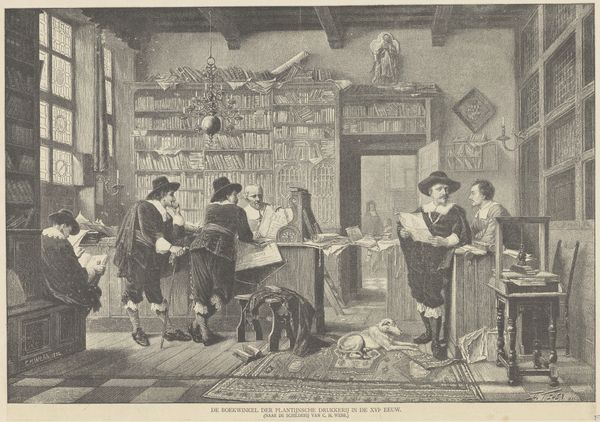
painting, watercolor
#
portrait
#
painting
#
watercolor
#
historical fashion
#
19th century
#
genre-painting
#
watercolor
#
realism
Dimensions: height 440 mm, width 555 mm
Copyright: Rijks Museum: Open Domain
Curator: Welcome. We're looking at Jan Striening's watercolor titled "Vijf mannen in interieur," which translates to "Five Men in Interior." It was likely created between 1837 and 1903, capturing a glimpse into 19th-century life. Editor: My initial impression is one of muted formality. The palette is quite restrained, almost monochrome, dominated by browns and grays, lending a sense of gravitas to the scene. The composition feels carefully structured. Curator: Indeed. Note how the artist uses clothing as signifiers of status, but also, consider what else they tell us. We get hints of 19th-century aspirations in clothing and professional identities in these men seemingly captured mid-meeting. The dog suggests not only companionship, but a cultural marker. Editor: Absolutely. The dog at the feet of the seated figure adds a dimension of domesticity and perhaps even loyalty. But I’m also intrigued by the arrangement around the central table, the way the eye is led by lines, almost like a stage set. Look at the deliberate placement of each figure to guide the eye to key areas. Curator: The doorway on the right acts almost as a second stage; is it arrival or departure? What feelings are created when the figures appear so close, as if the action of reading or listening, is for all to see in an open space? Is it a space for knowledge or some kind of civic activity, for a cultural ritual? Editor: It is hard to be sure about their intention or activity, as we are drawn to the contrast in textures and tonal depth that creates atmosphere. There’s also the interesting interplay of light and shadow throughout the room. Do you notice how certain areas seem brighter, almost spotlit? It creates a focal point and emphasizes certain narrative moments. Curator: Light absolutely creates focus, drawing the eye deeper, encouraging questions. These men appear to be involved in the intellectual culture of the time, hinting at how communities, perhaps those of scientists, researchers, writers or clergy engaged in thoughtful and cultural exchange. The historical weight here creates room for us to interpret and speculate, it is very intriguing. Editor: Striening offers a meticulously crafted slice of life, filtered through an elegant artistic lens, so, I concur! I'm left admiring the restrained precision he employs and the quiet impact of that choice.
Comments
No comments
Be the first to comment and join the conversation on the ultimate creative platform.
